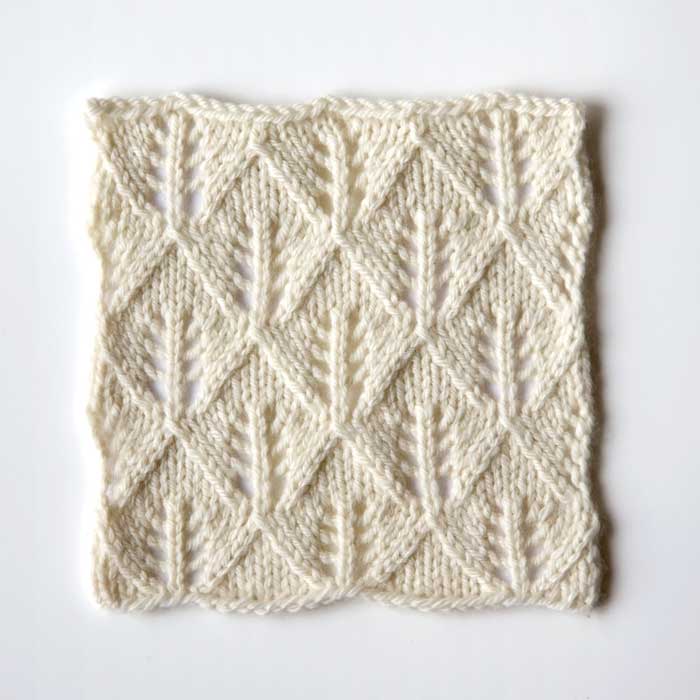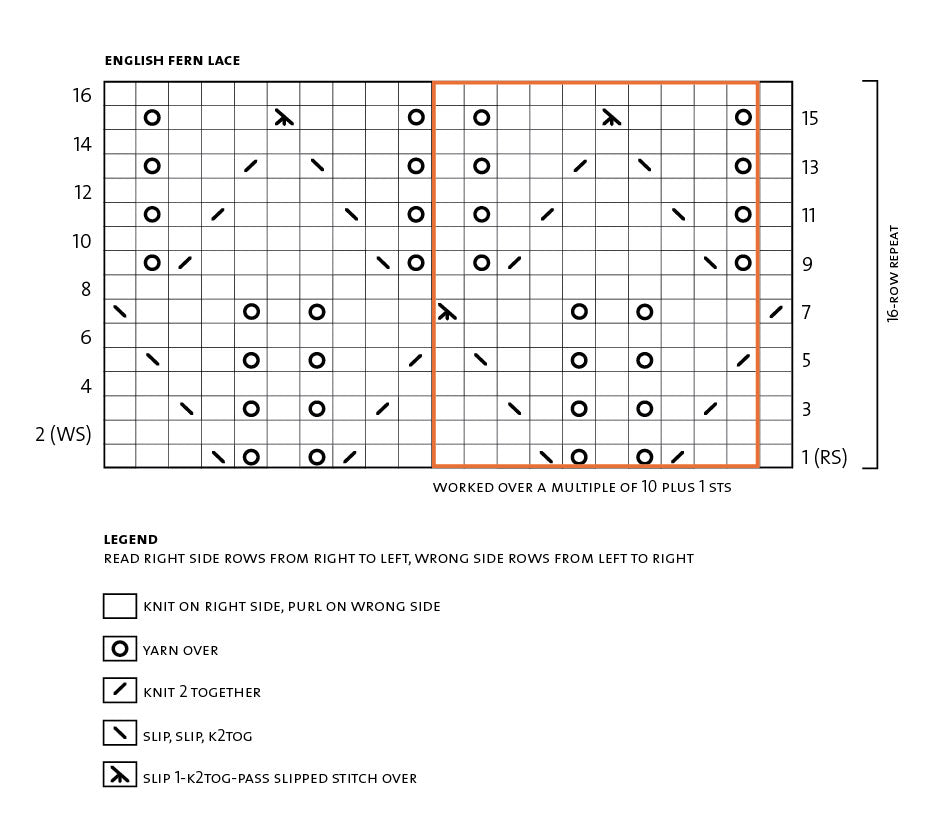This is one of my favourites. An old traditional pattern that pops up in most knitting pattern guides. Barbara Walker includes it as "Fern or Leaf-Patterned Lace" in her first Treasury of Knitting Patterns
 , and it also shows up in the British Isles chapter of James Norbury's Traditional Knitting Patterns, as the "Fern Stitch Pattern."
, and it also shows up in the British Isles chapter of James Norbury's Traditional Knitting Patterns, as the "Fern Stitch Pattern."It's a beautiful motif, and also a great learning lace knitting pattern for a few reasons:
- it is visually easy to read, with clear diagonal decreases and vertical yarn-overs
- it combines two types of single decreases and a double decrease
- all wrong side rows are worked plain
- it changes dramatically with lace blocking
- it shows the usefulness of knitting charts
- the results are beautiful, and well within the reach of a new lace knitter!
How to read the English Fern or Leaf Lace chart
If you can, right-click the chart image above and open it in a new window so you can refer to it.
Notice that the lace is worked over a multiple of 10 plus 1 stitches. This means you work it over 21, 31, 41, 51, etc., stitches. The orange outline shows the 10-stitch block that is repeated.
When you read a chart, read right side (RS) rows from right to left, and wrong side (WS) rows from left to right.
Notice the rightmost and leftmost stitches on Row 7. Do you see how they are different from the stitches inside the orange box? Inside the box, the decrease is a sl1-k2tog-psso (a left leaning double decrease). But on the right, there's a k2tog, and on the left, there's a ssk. The chart is showing you that special handling is needed on Row 7. This is because the "leaves" intersect on Row 7 (and again on Row 15), and they share a decrease when they intersect. But on the edge of the fabric, they don't intersect, and so have a single decrease instead of a double decrease.
Here's how you would read Row 1 of this chart: Knit 3, k2tog, yo, k1, yo, ssk, k5, k2tog, yo, k1, yo, ssk, k3.
And Row 3: Knit 2, k2tog, k1, yo, k1, yo, k1, ssk, k3, k2tog, k1, yo, k1, yo, k1, ssk, k2.
See? Not too hard, just read each square of the chart as you come to it and do what it tells you to do.
Working in multiples
So how do we use the chart to make a bigger piece of knitting?
Find the closest of multiple of 10 plus 1 to the size you want. Here's a chart of 6 x 10 plus 1 = 61 stitches.
The pattern within the orange outline repeats. But you usually have to work the pattern a little differently at the edges. I've outlined those in blue. The final repeat is identical except for that single ssk on Row 7. (Right click the image below and open in a new window to see a larger version).
And here's what this looks like:
Here's what it looks like in dk-weight yarn (this is an image from the Idiot's Guide to Knitting):
[single-product handle="arbois-cardigan"]
